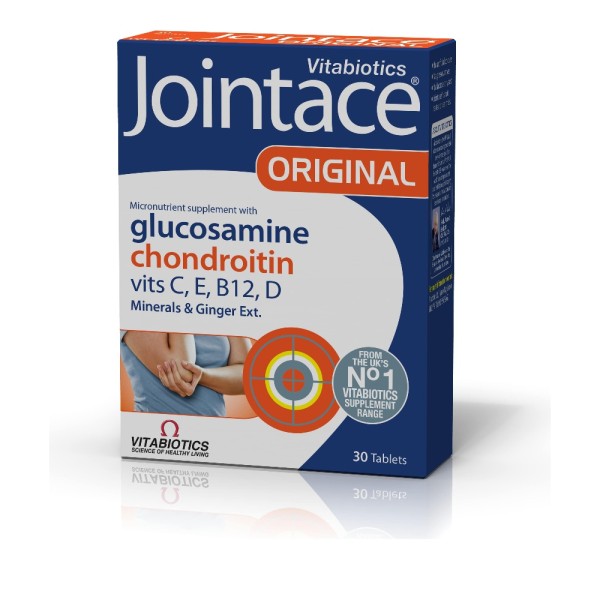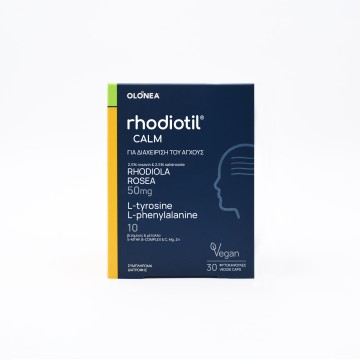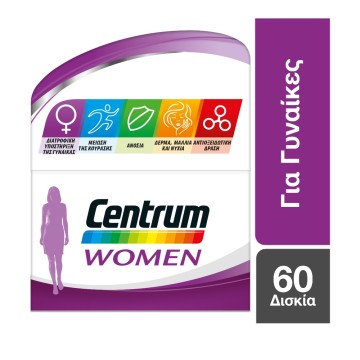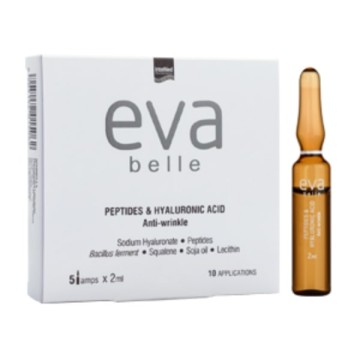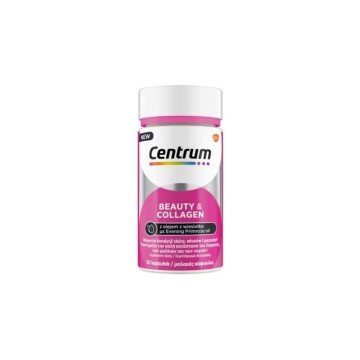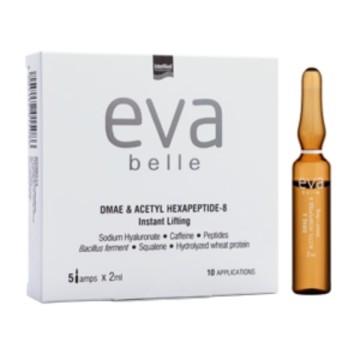Free shipping on orders over 39.00€
Vitabiotics Jointace Chondroitin Chondroitin Glucosamine 30Tabs
The food supplement JOINTACE Chondroitin by Vitabiotics contains per two tablets 1000mg of glucosamine sulfate and 400mg of chondroitin sulfate. Glucosamine sulfate and chondroitin sulfate are structural components of joint cartilage. Glucosamine sulfate contributes to the mobility and flexibility of cartilage, ligaments and tendons, while reducing pain by reducing inflammation in these areas. Chondroitin sulfate participates in maintaining the lubricating properties of joint fluids and inhibits the action of enzymes that break down cartilage, contributing to joint mobility, elasticity and flexibility. It is also a powerful anti-inflammatory and therefore reduces joint pain. Glucosamine sulfate and chondroitin sulfate have been shown to work synergistically to achieve cartilage remodeling and repair. JOINTACE Chondroitin also contains ginger, which has anti-inflammatory and antioxidant properties helping to reduce pain, maintain mobility and protect against joint stiffness. Vitamins and minerals contribute to good joint health through their involvement in inflammatory pathways, through their antioxidant activity or through their contribution to bone health and calcium metabolism
Composition Features - Synergistic effect of glucosamine sulfate and chondroitin sulfate - Ginger extract with anti-inflammatory effect Dosage & Instructions for use Two tablets daily with the main meal with a glass of water or cold drink
Caution: glucosamine sulfate is an amino sugar and therefore should not be taken by diabetics unless under medical guidance. Glucosamine sulfate should not be taken by people with a seafood allergy (source of glucosamine and chondroitin: shellfish)
Nutritional Value Two tablets provide: Glucosamine KCl Sulfate 1000mg Chondroitin Sulfate 400mg Vitamin D3 (800IU) 20µg Vitamin E 40mg Vitamin C 60mg Folic Acid 400µg Vitamin B12 20µg Zinc 10mg Manganese 4mg Copper 1mg Selenium 120µg Preservatives: Contains 80mg equivalent to Ginger gluten, artificial colors, sugar, salt or yeast. Also, it does not contain pharmaceutical substances or hormones. Contains the following ingredients: VITAMIN D DESCRIPTION Vitamin D is produced naturally in the skin through the action of sunlight on cholesterol. Its active form (1,25 dihydroxycholecalciferol) is often classified as a hormone because it acts as a regulator in a manner similar to that of steroid hormones
Vitamin D is measured in μg or iu (1μg = 40i.u.)
STABILITY Vitamin D is stable to normal cooking processes
ACTION Vitamin D is converted in the body to 1,25 dihydroxycholecalciferol, which together with calcitonin and parathormone regulates the concentration of calcium in the blood plasma. This form is classified by many authors as hormones, due to the fact that its mode of action resembles that of steroid hormones. All the functions of vitamin D are related to its "hormonal" action
The main action of vitamin D is to increase the level of calcium in the blood by promoting the absorption of calcium and phosphorus from the intestine, as well as through the release of these minerals from the bones. In order to maintain the normal calcium/phosphorus ratio in the body, vitamin D also increases the excretion of phosphorus, but not calcium, by the kidneys
DEFICIENCY Rickets Lack of vitamin D during childhood leads to the development of rickets. Rickets can appear prematurely as early as two months of age, when the cranial springs remain open and the skull wall is thin (craniotabes). It can also delay the formation of the first teeth and affect standing. Rickets causes widening of the ends of the long bones, resulting in a characteristic curve in the legs when the child begins to walk
Osteomalacia In adults, vitamin D deficiency leads to osteomalacia. This disease is essentially the same as rickets, but its symptoms are slightly different, as the bones no longer grow. Bone thinning and weakening occurs in osteomalacia, and spontaneous fractures can also occur
Osteoporosis and Hip Fracture The incidence of osteoporosis (brittle bones) and hip fracture may increase in postmenopausal women who do not have adequate vitamin D stores
REQUIREMENTS Maximum Safe Level for Daily Supplementation = 10μg Recommended Daily Allowance (RDA) = 5μg BENEFITS OF TAKING A VITAMIN D SUPPLEMENT There are a few categories of people who are theoretically much more likely to be deficient in vitamin D. These people need to take a supplement with this nutrient. These categories include: • Vegetarians and especially vegans (1), because vitamin D is mainly found in animal and dairy products
• Asian women and children who may not be consuming enough vitamin D foods and who choose to cover their skin (2)
• Breastfeeding women whose breast milk may be poor in vitamin D, especially in winter (3)
• Elderly people who are confined to a house and tend to be malnourished (4)
SAFETY There are some reports of hypercalcemia (high blood calcium levels) in children given 50µg (2000i.u.) of vitamin D daily. In adults, symptoms of vitamin D toxicity occur at daily doses of 625μg (25000i.u.). However, it has recently been shown that vitamin D at lower levels (about 1000 iu) can have opposite effects, which are not related to hypercalcemia
INTERACTIONS AND CONTRAINDICATIONS The following list is not complete and any person on medication should consult their doctor before using a vitamin D supplement. • Vitamin D interacts adversely with certain heart medications, such as verapamil (Verapamil)
• Concomitant estrogens may increase blood levels of vitamin D and therefore vitamin D supplements should not be used by people on such medication
• It is thought that vitamin D supplements may increase the activity of anticoagulants, such as warfarin. Although there are conflicting views on this interaction, it would be prudent for people on anticoagulants to avoid vitamin D supplements as a precaution
• Vitamin D should not be taken at the same time as thiazide diuretics, as this combination has been shown to increase blood calcium levels
FOOD SOURCES Food(iu/100g)(mg/100g) Cod liver oil8500212,5 Herring and salted fish896 22,4 Canned salmon50012,5 Evaporated milk1604,0 Eggs651,6 Butter 32 0,8 Liver 32 0,8 Cheddar cheese 12 0,3 1,2 .0,03 Whole milk 00 XNUMX Skimmed milk XNUMX GLUCOSAMINE SULFATE DESCRIPTION Glucosamine sulphate is a sulphate containing an amino sugar. While there are several forms of glucosamine, an overwhelming amount of research supports the use of glucosamine sulfate. Glucosamine sulfate has been recognized for its beneficial effects on osteoarthritis, rheumatoid arthritis, inflammation of joints and discs, tendons, ligaments, muscles and damaged tissues
ACTION Glucosamine sulfate is found naturally in connective tissue and cartilage, where it contributes to mobility, strength and structural integrity of joints. It is also found in muscles, tendons, ligaments, vertebral discs and heart valves. Glucosamine sulfate stimulates cells involved in the production of bone and cartilage tissue
Glucosamine sulfate is fundamental to the synthesis of glycosaminoglycans (GAGs), which are responsible for forming the network in which collagen is built and for protecting cartilage from destruction. Key glycosaminoglycans derived from glucosamine include hyaluronic acid salt, chondroitin sulfate, heparin, and keratan sulfate. Glucosamine sulfate also helps coagulate the lubricating synovial fluid that protects and supports joints
The sulfate form of glucosamine is recommended over other forms (such as N-acetylglucosamine or glucosamine hydrochloride) as sulfur aids in the metabolism of glucosamine and its incorporation into the body. Additionally, glucosamine sulfate is a smaller molecule than other glucosamine derivatives and is therefore more easily absorbed
Studies have shown that approximately 90 to 98% of an orally administered dose of glucosamine sulfate is absorbed by the body. However, there are no detailed absorption studies for the other forms of glucosamine
SUGGESTED DOSAGE From 500 to 1500mg daily
For osteoarthritis, a dosage of 1500mg of glucosamine sulfate for a period of 8 weeks is recommended. To maintain the general good health of the joints, a daily dosage of 500mg is recommended
BENEFITS OF TAKING A GLUCOSAMINE SULPHATE SUPPLEMENT Glucosamine sulfate is primarily used to maintain joint health. Amino sugar helps coagulate the lubricating synovial fluid, which protects and supports joints and helps form and rebuild cartilage
Arthritis Research has shown that glucosamine sulfate is an effective treatment for arthritis. Patients taking 1500mg of glucosamine sulfate daily experienced partial or even complete recovery from osteoarthritis symptoms as little as 8 weeks after starting (2). Glucosamine works by helping to rebuild damaged cartilage tissue and increasing the coagulation of synovial fluid. Arthritis patients experienced improvement in joint mobility (increased flexibility) and reduction in joint pain and inflammation after taking a daily dose of glucosamine sulfate (3).
Wound Healing The availability of glucosamine decreases in proportion to the production of hyaluronic acid. Oral administration of glucosamine after surgery or injury enhances the production of hyaluronic acid in the wound, thus promoting rapid healing, while potentially reducing scarring-related complications (4)
Crohn's Disease and Colitis Glucosamine produces part of the enzyme needed to synthesize glycoproteins in the gastrointestinal tract. The activity of this enzyme has been found to be different in people with Crohn's disease and ulcerative colitis (5,6). The mechanism by which this activity occurs is not known, however it is believed that alterations in glucosamine levels may affect mucosal tissue formation. However, in these cases, the use of supplements containing glucosamine needs further studies
SAFETY Glucosamine sulfate can be taken safely long-term in dosages up to 1500mg daily
Mild side effects were identified in some studies, including nausea, heartburn, and headache. However, several of these side effects occurred in elderly patients and may be related to pre-existing gastrointestinal disorders and their treatment.
INTERACTIONS AND CONTRAINDICATIONS Diabetics should consult their physician before using glucosamine sulfate and should monitor their blood sugar levels if taking glucosamine
Footnote: Glucosamine sulfate has been shown to be as effective as nonsteroidal anti-inflammatory drugs (NSAIDS) in reducing osteoarthritis symptoms
GINGER DESCRIPTION Ginger (Zingiber officinale) comes from South Asia and is nowadays cultivated in all tropical countries. Ginger root or rhizome is widely used throughout the world for culinary and medicinal purposes
USES OF THE HERB Ginger has been shown to have carminative (relieves flatulence or gas), diaphoretic (produces sweat) and antispasmodic properties. It is used to treat numerous medical conditions, from treating cardiovascular problems to motion sickness
BENEFITS OF TAKING A GINGER SUPPLEMENT Ginger is used for colic, flatulence, and indigestion from flatulence (gravity). It is also used for motion sickness, e.g. trips etc
Heart Health Taking high-dose Ginger (over 10g daily) significantly reduces platelet aggregation (clot formation) because it suppresses the formation of thromboxane (1) by 37%. Ginger lowers cholesterol levels (and suppresses the biosynthesis of new cholesterol) when taken long-term (2,3). Also, the compounds capsaicin (capsaicin) and shogaol, contained in Ginger, have been shown to reduce blood pressure
Anti-inflammatory Some of the active ingredients contained in Ginger suppress the production of specific prostaglandins and thromboxane synthesis, which makes Ginger an effective treatment for inflammatory and rheumatic conditions such as arthritis (1,4)
Motion sickness and motion sickness Ginger can significantly reduce motion sickness. Taking ginger root, in a dosage equivalent to 1000mg of the herb powder, reduces the tendency to vomit and prevents symptoms such as vertigo, cold sweats and other gastrointestinal symptoms associated with motion sickness (5). The gingerols and shogaols contained in Ginger are responsible for its antiemetic (prevent vomiting) properties (6). However, the mechanism of this activity has not yet been elucidated, but it is thought to be due to Ginger's effect on the digestive system. Ginger can be a good alternative to drugs in the treatment of motion sickness for the elderly, who may be particularly prone to drowsiness and loss of balance
Digestive System Health Ginger stimulates the production of gastric secretions and high doses have a significant and decisive effect on increasing saliva production (6). Ginger reduces the irritation of the intestinal wall, maintaining the muscle tone of the intestinal muscles (7)
Ginger extracts significantly suppress serotonin-induced diarrhea through their anti-laxative properties (prevent bowel movement). Numerous anti-ulcer components of Ginger have been isolated. This results in Ginger extracts being used effectively in the treatment of peptic ulcers (8). Ginger can also protect the stomach from alcohol and NSAIDs, which have harmful effects (9)
Antioxidant Action Ginger extracts show antioxidant action. Certain components of Ginger scavenge peroxide and hydroxyl free radicals, while suppressing lipid peroxidation (8)
Infection Ginger extract significantly suppresses the growth of bacteria, and it also has fungicidal properties. Ginger essential oils work against rhinoviruses and ginger is often used to treat the common cold
Other Therapeutic Uses Ginger stimulates circulation and heat production (from metabolic reactions) and is described as a warming herb
SAFETY AND PRECAUTIONS Side effects from consuming Ginger are rare. Some people may experience heartburn. People with a history of gallstones should consult a specialist before using Ginger (10)
Foods containing Ginger can be consumed during pregnancy to relieve nausea and vomiting. However, pregnant and lactating women should consult a healthcare professional before using ginger supplements.
Ginger is not recommended for use in children
INTERACTIONS AND CONTRAINDICATIONS Excessively high doses of Ginger may interact with existing treatments for heart problems, diabetes, and clotting problems. Ginger can also reduce the absorption of antipsychotic drugs.
EAN: 5021265222407













